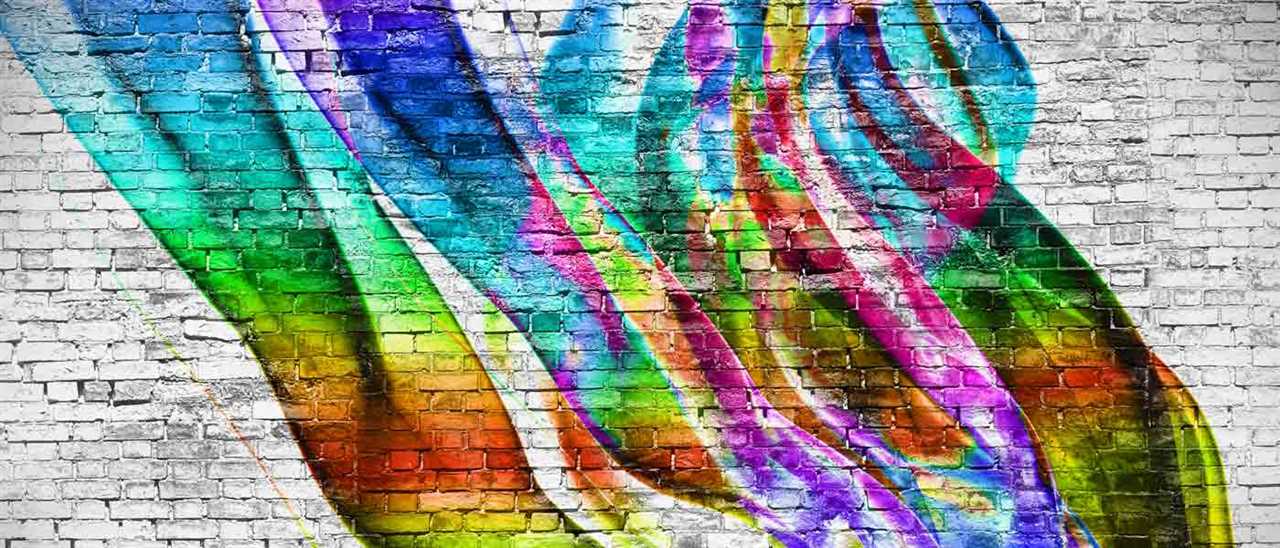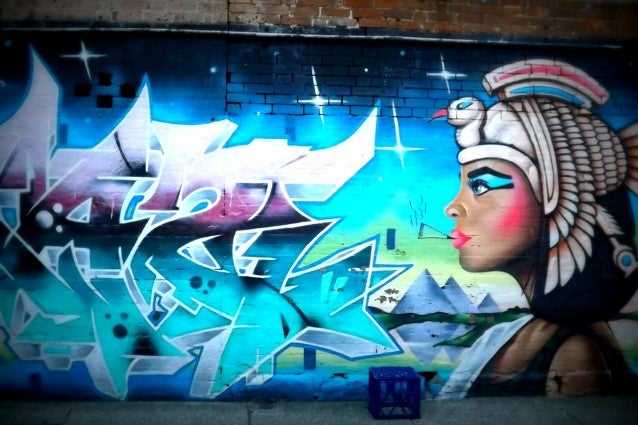
Street art has become a vibrant and captivating form of artistic expression around the world. From the graffiti-covered streets of New York City to the colorful murals in Berlin, artists are using the urban landscape as their canvas to share their thoughts, ideas, and emotions.
What sets street art apart is its ability to engage with the public on a personal and emotional level. Unlike traditional gallery art, street art is accessible to everyone, regardless of their background or social status. It brings art out of the confines of museums and galleries and into the streets, where it can be enjoyed by all.
The beauty of street art lies in its ability to transform dull and mundane spaces into vibrant and visually pleasing ones. Whether it’s a small stencil on a wall or a large-scale mural, street art adds color, personality, and charm to otherwise blank and uninspiring surfaces. It brings life to neglected urban areas and creates a sense of identity and community.
Moreover, street art is often used as a powerful medium for social and political commentary. Artists use their work to address pressing issues, challenge societal norms, and spark conversations. By doing so, street art provokes thought and introspection, leaving a lasting impact on those who come across it.
Overall, street art serves as a powerful reminder of the boundless creativity and imagination of artists. It is an ever-evolving form of expression that continues to inspire, engage, and challenge us. Next time you walk down the city streets, take a moment to appreciate the colorful and thought-provoking world of street art that surrounds you.

Street art is not just about colorful murals and unique artistic expressions. It also carries meaningful messages that often reflect the social and political issues of our time. Artists use street art as a powerful medium to communicate their thoughts and provoke discussions among the public.
One of the common messages behind street art is activism. Many street artists aim to raise awareness about various social injustices and push for positive change. They often choose prominent public spaces to display their art, ensuring that their message reaches a wide audience. Street art can draw attention to issues such as racism, inequality, poverty, and environmental concerns.
Another message often conveyed through street art is the celebration of diversity and multiculturalism. Artists strive to represent different cultures and communities through their artwork, highlighting the richness and uniqueness of each. They aim to break down barriers and promote understanding and acceptance among people from different backgrounds.
Street art can also serve as a form of protest against oppressive systems and institutions. Artists use their art to criticize governments, corporations, and other powerful entities that they believe are responsible for societal issues. By making their statements publicly visible, they hope to inspire others to question authority and stand up for what they believe in.
Additionally, street art often serves as a voice for the marginalized and underrepresented communities. Artists use their art to give a platform to those who are often silenced or overlooked. Through their artwork, they tell the stories of individuals who may not have the opportunity to share their experiences with the wider world.
The message behind street art is not always straightforward or explicit. Many artists incorporate symbolism and metaphors into their work, allowing viewers to interpret the message in their own way. This ambiguity invites dialogue and discussion, encouraging people to think critically about the issues depicted in the art.
Overall, street art is more than just visually appealing. It carries important messages that reflect the concerns, frustrations, and aspirations of the artists and the communities they represent. Through their creativity and artistic skills, street artists contribute to the social and cultural fabric of our cities, making them vibrant and thought-provoking spaces.
The Vibrant and Colorful World of Street Art

Street art has become a vibrant form of artistic expression that adds color and beauty to cities around the world. From large murals to small graffiti tags, street art brings art to the streets and engages with the local community.
History of Street Art

Street art has a rich history dating back to ancient times. In ancient Egypt and Rome, graffiti was used as a form of political protest and social commentary. In the 20th century, street art became associated with urban subcultures and has since evolved into a respected art form.
Different Styles of Street Art

Street art encompasses a wide range of artistic styles and techniques. Some common styles include stencil art, wheatpaste posters, and freehand painting. Each artist brings their own unique style and creative vision to their work, resulting in a diverse and vibrant display of art.
| Style | Description |
|---|---|
| Stencil Art | Artists create stencils with different designs and use spray paint to create intricate and detailed images. |
| Wheatpaste Posters | Artists use a mixture of flour and water to paste posters onto walls, often featuring bold and eye-catching designs. |
| Freehand Painting | Artists use brushes and paint to create colorful and expressive murals directly on the walls or other surfaces. |
These different styles come together to create a vibrant and colorful world of street art that not only enhances the visual appeal of a city but also allows artists to convey powerful messages and tell meaningful stories.
Street art also has the power to transform public spaces into dynamic and interactive art galleries. It encourages people to stop, observe, and engage with the artwork, sparking conversations and creating a sense of community.
The vibrant and colorful world of street art continues to evolve and expand, embracing new technologies and mediums. With its ability to captivate and inspire, street art is here to stay, leaving its mark on the urban landscape and enriching our lives with its creativity and beauty.
The Urban Gallery: Graffiti and Beyond

Graffiti artists use walls, buildings, and other public spaces as their canvas, creating unique and often temporary works of art. Some graffiti pieces are simple and straightforward, with bold colors and clear messages. Others are more complex, featuring intricate designs and hidden meanings.
Beyond graffiti, there are many other forms of street art that can be found in urban areas. Stickers, stencils, and wheatpaste are just a few examples. These different techniques allow artists to express themselves in various ways, and each has its own unique style and visual impact.
What makes street art so special is its accessibility. Unlike traditional art galleries, street art is free and openly displayed for anyone to see. It brings art to the masses and adds vibrancy and character to city streets. Street art often challenges the conventional norms of the art world, blurring the line between fine art and vandalism.
As street art continues to evolve, cities are beginning to embrace it as a valuable form of cultural expression. Some cities even have designated areas where artists can legally create and display their work. These designated spaces create a sense of community and give street artists a platform to showcase their talents.
Overall, street art is an important form of artistic expression that adds color and creativity to urban environments. The urban gallery of graffiti and beyond is ever-growing, constantly changing, and always exciting to explore.

I am a mural enthusiast and a fervent admirer of street art. Rather than creating murals myself, I am passionate about collecting them. My love for street art knows no bounds. I am dedicated to curating and cherishing these artworks that grace the streets. My collection stands as a testament to my profound appreciation for this form of artistic expression.
read about me



